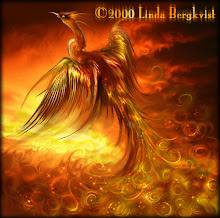
St. Patrick is believed to have driven the snakes from Ireland. Once a pagan himself, St. Patrick is one of Christianity's most widely known figures.
The modern secular holiday is based on the original Christian saint's feast day also thought to be the date of the saint's death. In 1737, Irish immigrants to the United States began observing the holiday publicly in Boston and held the first St. Patrick's Day Parade in New York City in 1766.
Today, the tradition continues with people from all walks and heritages by wearing green, eating Irish food, and attending parades. St. Patrick's Day is bursting with folklore; from the shamrock to the leprechaun and to pinching those that are not wearing green.
St. Patrick's Day is celebrated on March 17, his religious feast day and the anniversary of his death in the fifth century. The Irish have observed this day as a religious holiday for thousands of years.
On St. Patrick's Day, which falls during the Christian season of Lent, Irish families would traditionally attend church in the morning and celebrate in the afternoon. Lenten prohibitions against the consumption of meat were waived and people would dance, drink, and feast—on the traditional meal of Irish bacon and cabbage.
The first St. Patrick's Day parade took place not in Ireland, but in the United States. Irish soldiers serving in the English military marched through New York City on March 17, 1762. Along with their music, the parade helped the soldiers to reconnect with their Irish roots, as well as fellow Irishmen serving in the English army.
Over the next thirty-five years, Irish patriotism among American immigrants flourished, prompting the rise of so-called "Irish Aid" societies, like the Friendly Sons of Saint Patrick and the Hibernian Society. Each group would hold annual parades featuring bagpipes (which actually first became popular in the Scottish and British armies) and drums.
Up until the mid-nineteenth century, most Irish immigrants in America were members of the Protestant middle class. When the Great Potato Famine hit Ireland in 1845, close to a million poor, uneducated, Catholic Irish began to pour into America to escape starvation. Despised for their religious beliefs and funny accents by the American Protestant majority, the immigrants had trouble finding even menial jobs. When Irish Americans in the country's cities took to the streets on St. Patrick's Day to celebrate their heritage, newspapers portrayed them in cartoons as drunk, violent monkeys.
However, the Irish soon began to realize that their great numbers endowed them with a political power that had yet to be exploited. They started to organize, and their voting block, known as the "green machine," became an important swing vote for political hopefuls. Suddenly, annual St. Patrick's Day parades became a show of strength for Irish Americans, as well as a must-attend event for a slew of political candidates. In 1948, President Truman attended New York City 's St. Patrick's Day parade, a proud moment for the many Irish whose ancestors had to fight stereotypes and racial prejudice to find acceptance in America.
Today, St. Patrick's Day is celebrated by people of all backgrounds in the United States, Canada, and Australia. Although North America is home to the largest productions, St. Patrick's Day has been celebrated in other locations far from Ireland, including Japan, Singapore, and Russia.
In modern-day Ireland, St. Patrick's Day has traditionally been a religious occasion. In fact, up until the 1970s, Irish laws mandated that pubs be closed on March 17. Beginning in 1995, however, the Irish government began a national campaign to use St. Patrick's Day as an opportunity to drive tourism and showcase Ireland to the rest of the world. Last year, close to one million people took part in Ireland 's St. Patrick's Festival in Dublin, a multi-day celebration featuring parades, concerts, outdoor theater productions, and fireworks shows.

Read more...
![]()






















